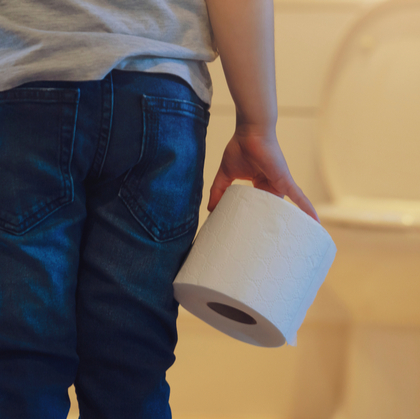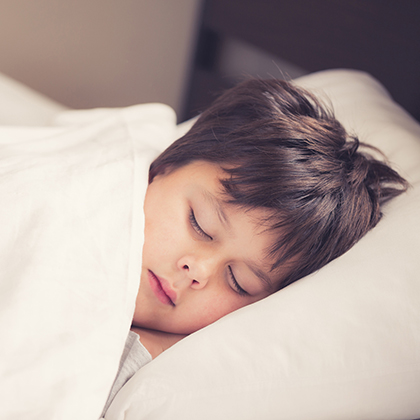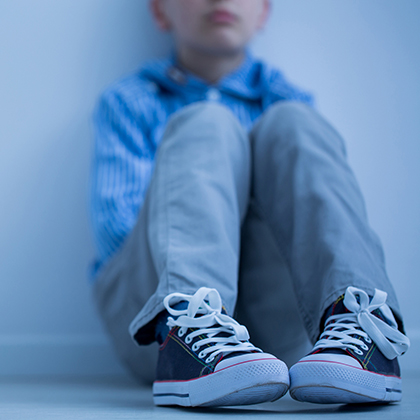
A condition that causes inflammation of the blood vessels (vasculitis), Kawasaki disease – or mucocutaneous lymph node syndrome, as it’s sometimes called – mainly affects children, particularly those aged five years old and younger.
Named after the Japanese doctor who first described it in the 1960s – Tomisaku Kawasaki – it causes a range of symptoms, including a high temperature that lasts for five days or longer. If left untreated, however, it can cause potentially serious health complications.
Who can be affected by Kawasaki disease?
Kawasaki disease isn’t common, affecting around eight in every 100,000 children in the UK every year (i). Japan has the highest known number of cases, where the incidence in 2012 was 265 children in every 100,000 (ii) – a figure that’s thought to have increased since then. In Europe, the country with the highest number of Kawasaki disease cases is Ireland with around 15 cases per 100,000 (iii).
Kawasaki disease is also more common in boys than in girls, and 85 percent of affected children are aged five years old or younger (the age a child is most likely to have Kawasaki disease is between 18 and 24 months) (iii).
While Kawasaki disease is still relatively rare in the UK, according to the UK Kawasaki Disease Foundation the number of children affected throughout the world is doubling every year, with four times as many admitted to hospital for Kawasaki disease in England in 2015 compared with 10 years earlier (iv). The charity also claims there are currently around a thousand hospital admissions every year in the UK involving Kawasaki disease, and that an estimated 20,000 people – children, young people, and adults – are living in the UK today who have or have previously had the condition (iv).
However, the most important reason for being more aware of the signs and symptoms of Kawasaki disease is that it can cause serious heart complications that can cause health problems not just during childhood but in later life too. Indeed, Kawasaki disease is currently one of the main causes of acquired heart disease in children under the age of five years in the UK (acquired means it developed after birth). Thankfully early diagnosis and treatment can reduce the risk of this happening.
What causes Kawasaki disease?
We still don’t know exactly what causes Kawasaki disease, though it’s likely that genes are involved because parents of children with Kawasaki disease are more likely to have had it themselves when they were younger. If a child has a brother or sister who had Kawasaki disease, they’re more likely to get it too. The fact that children who live in certain parts of the world – or those with parents who originate from certain parts of the world – are more likely to be affected by it than children from other places also points towards the involvement of genetics.
A gene responsible for causing Kawasaki disease hasn’t been identified yet, but according to the NHS one theory suggests it may be the result of many genes rather than just one, each of which may increase a child’s chances of developing the condition slightly (v).
Other theories include the idea that Kawasaki disease is an abnormal response to a common virus that doesn’t cause any harm to other people, though no one virus or bacterium has been identified as a cause. It could even be that a child’s genetic makeup may make their immune system more likely to overreact to one or more viral or bacterial infections, though again nobody really knows if this is the case. There’s also an idea that Kawasaki disease could be an autoimmune disorder, where the immune system attacks tissues in the body that it mistakenly sees as harmful.
The good news is that, even if infections are involved in the development of Kawasaki disease, the condition itself isn’t contagious, which means you can’t ‘catch’ it from someone who’s affected.
What are the symptoms of Kawasaki disease?
A child who has Kawasaki disease will typically have had a high body temperature for at least five days, as well as one or more of the following symptoms:
-
Rash (this can vary in appearance and may affect different parts of the body in different children – often the chest, stomach, back, groin, hands and feet are affected)
-
Red throat and mouth
-
Red eyes (but no sticky discharge)
-
Swollen lymph nodes in the neck
-
Dry, cracked lips
-
Mild swelling and/or redness in the hands or feet
There are other, less common symptoms too, with all symptoms usually developing in three distinct phases during a six-week period:
Acute phase
This describes the sudden onset of initial symptoms, usually during the first two weeks of the condition. At this time the symptoms can be quite severe, and an affected child will seem very irritable. The symptoms include:
-
A high temperature that doesn’t respond to antibiotics, paracetamol or ibuprofen. This usually lasts for at least five days but without proper treatment it can last for 11 days or longer (sometimes as long as four weeks, though this is rare). In severe cases, Kawasaki disease can cause a body temperature of 40C.
-
Oral problems can also develop suddenly during this phase, including dry, cracked lips that may swell up and bleed; redness and swelling in the inside of the mouth and back of the throat; a red and swollen tongue that can be covered in small lumps (otherwise known as ‘strawberry’ tongue).
-
Swelling and redness of hands and feet causing pain and tenderness. This may make a child reluctant to walk or crawl, or touch anything with their hands
,because it feels so uncomfortable. -
A skin rash is a very common symptom at this stage.
-
Swollen lymph nodes at the side of a child’s neck (usually only one side, but in some cases both sides may be swollen).
-
Heart symptoms can also happen at this stage too, including a rapid heart rate (read on to find out more about the heart-related complications of Kawasaki disease).
Sub-acute phase
The second phase of Kawasaki disease lasts another couple of weeks. At this time a child’s symptoms will ease a little, though they may take a while to disappear completely Other symptoms, however, can appear, including:
-
Stomach pain
-
Diarrhoea
-
Vomiting
-
Headache
-
Drowsiness and lethargy
-
Swollen, painful joints
-
Jaundiced (yellowing) skin and eyes
-
Peeling of the skin on the hands and feet
Convalescent phase
Usually lasting from four to six weeks, this phase is when the symptoms start improving – though a child may still have low energy levels and tire easily for some time still.
Children younger than one year of age, however, may not always have many or indeed any of the above symptoms apart from a high temperature that’s lasted five days or longer. Some of the symptoms can often settle on their own too. It is, however, still important to tell your GP if your child has or has had any of these symptoms – even if those symptoms have since passed – as it’s important they get tested for Kawasaki disease because of the complications it can cause if it goes untreated.
What else could be causing these symptoms?
If a child is suspected of having Kawasaki disease they may also be tested for one or more other conditions that could be causing their symptoms instead, including:
-
Scarlet fever
-
Toxic shock syndrome
How is Kawasaki disease treated?
There’s no single test that can diagnose Kawasaki disease. But if a child’s had a high temperature for five days or longer (sometimes only four days), and especially if they also have any of the other symptoms listed above, their GP may refer them for tests that could help support a positive diagnosis, such as urine tests, blood tests and – in some cases – a lumbar puncture (where samples of fluid are taken from their spine).
Since Kawasaki disease can often cause complications that affect the heart, hospital tests to check a child’s heart function are also often carried out, such as an electrocardiogram (ECG) or an echocardiogram (an ECG measures the heart’s electrical activity while an echocardiogram uses sound waves to produce images of the heart and its structure).
If diagnosed with Kawasaki disease, a child will usually begin hospital treatment as soon as possible, even if they have relatively mild symptoms. This will reduce their risk of developing complications – the earlier the treatment is given, the lower their risk becomes.
There are two main treatments a child may be given in hospital:
Aspirin
Normally, children under the age of 16 are advised not to take aspirin because it can cause side effects including a condition that causes serious liver and brain damage called Reye’s syndrome. But having Kawasaki disease is one of the few situations when a child younger than 16 is given aspirin. That’s because aspirin can help with some of the symptoms of Kawasaki disease, including pain, swelling, and a high temperature.
Please note: children younger than 16 should only ever take aspirin if they’re being monitored by health professionals.
In hospital, children with Kawasaki disease are given aspirin until their temperature returns to normal. But they may also be prescribed low-dose aspirin for up to eight weeks to reduce the risk of blood clots forming and affecting their heart.
Immunoglobin
Given as an infusion injected directly into the bloodstream over a few hours, immunoglobin – or IVIg for short – is a solution containing antibodies from donated blood. Antibodies are proteins made by the immune system to fight organisms that cause disease (pathogens). Quite why these antibodies work in Kawasaki disease isn’t clear, but according to the NHS research shows IVIg can reduce fever as well as the risk of heart complications (vi). One theory is that IVIg may prevent inflammation in the arteries by somehow modifying the immune response (vii).
To reduce the chance of heart complications caused by Kawasaki disease, IVIg should be given within 10 days of the start of symptoms. The treatment is successful in the majority of cases, with fewer than five in 100 treated children developing a heart problem called an aneurysm (see below) after having treatment (compare this with the 25 in 100 children who don’t have treatment who go on to develop an aneurysm (vii)).
Other medicines are still being investigated as potential treatments for Kawasaki disease, including steroid medicines and a drug normally used to treat conditions such as rheumatoid arthritis and psoriasis called methotrexate.
Treatment at home
Once a child is discharged from hospital after having Kawasaki disease, their parents or carers will be given instructions on how to look after them at home until they are fully recovered – which, in most children, takes around six weeks. If they have developed any complications, however, they may need further long-term treatment and care.
What are the complications of Kawasaki disease?
Not all children who have Kawasaki disease develop complications, but it’s thought up to one in four who don’t receive treatment – because they have been incorrectly diagnosed, for example – experience a heart problem called an aneurysm (viii). Other complications have been reported, but they are very rare.
An aneurysm is caused by inflammation in the blood vessels that supply blood to the heart. The inflammation causes part of the wall of the blood vessel – usually, the coronary artery, though the main artery in the upper arm or upper thigh can also be affected – to weaken. Then as blood flows through, the pressure makes the blood vessel expand or bulge outwards, a bit like a balloon.
In rare cases, an aneurysm can burst, causing serious internal bleeding. More often, however, it can cause either a heart attack or heart disease. And while an aneurysm can sometimes heal by itself, in around two or three per cent of cases of untreated Kawasaki disease an aneurysm can be fatal (viii).
Children who develop heart complications after having Kawasaki disease are usually treated with some types of heart medicines and/or surgery, but they also have a higher risk of developing cardiovascular problems as adults, including heart attack and heart disease. Also, very rarely, Kawasaki disease can happen in adults.
Keeping your child healthy
There’s arguably little you could do to help prevent your child having Kawasaki disease if they’re genetically susceptible to it and are exposed to something – an infection, perhaps – that triggers it. That’s why it’s essential to be aware of the symptoms, since prompt treatment can help reduce their risk of developing complications.
There is, however, a lot you can do to keep their lifestyle as healthy as possible, which is a great way to make sure their immune system develops into a strong one. Giving them a healthy diet based on a variety of nutritious foods and making sure they get plenty of exercise will help make sure their immune system gets the best start.
Are there supplements fro children that aid in maintaining a strong immune system?
There are a few nutritional supplements you may want to consider giving your child to make sure they’re getting all the major nutrients their immune system needs. A quality multivitamin and mineral supplement is a good place to start, especially if your child is a fussy eater.
There’s a range of multivitamin products available for children – choose one that’s right for your child’s age, as this will help to make sure they’re getting the nutrients they need in the right doses. Depending on their age, your child may also like a chewable multivitamin or one that dissolves in water to make a fizzy drink, especially if they have problems swallowing tablets.
Find out more about multivitamins for children by reading our guide.
Vitamin D
Vitamin D is also essential for your child’s normal immune function. Indeed, Public Health England recommends all children up to four years old take a daily vitamin supplement throughout the year, with children aged five and older advised to take vitamin D during the autumn and winter months – or indeed all year round if they don’t spend a lot of time outside during the warmer months or they usually wear clothes that cover up most of their skin when they’re outdoors (ix).
You can give your child vitamin D as part of a multivitamin supplement or as a separate supplement – try kid-friendly vitamin D drops if they have problems with tablets.
A good-quality multivitamin will also contain vitamin C, which is another nutrient that’s needed for good immune support. Alternatively there are separate vitamin C tablets available for kids, including fast-dissolving vitamin C powders for children who don’t like taking tablets.
Kawasaki disease awareness
Kawasaki disease isn’t common in the UK, which may explain why many people don’t know much about it. But if you’re a parent or carer, it’s a good idea to know the signs and symptoms to look out for, as the higher our awareness of Kawasaki disease, the fewer children may be affected by potential serious complications that can last into their adult life. Find out more about other conditions that affect both children and adults in our pharmacy health library
References:
-
Available online: https://www.nhs.uk/conditions/kawasaki-disease/
-
Available online: https://www.ahajournals.org/doi/10.1161/CIR.0000000000000484
-
Available online: https://patient.info/doctor/kawasaki-disease-pro
-
Available online: https://www.societi.org.uk/kawasaki-disease/q-a/
-
Available online: https://www.nhs.uk/conditions/kawasaki-disease/causes/
-
Available online: https://www.nhs.uk/conditions/kawasaki-disease/treatment/
-
Available online: https://patient.info/childrens-health/kawasaki-disease-leaflet
-
Available online: https://www.nhs.uk/conditions/kawasaki-disease/complications/
-
Available online: https://www.nhs.uk/conditions/vitamins-and-minerals/vitamin-d/
Related Posts
Disclaimer: The information presented by Nature's Best is for informational purposes only. It is based on scientific studies (human, animal, or in vitro), clinical experience, or traditional usage as cited in each article. The results reported may not necessarily occur in all individuals. Self-treatment is not recommended for life-threatening conditions that require medical treatment under a doctor's care. For many of the conditions discussed, treatment with prescription or over the counter medication is also available. Consult your doctor, practitioner, and/or pharmacist for any health problem and before using any supplements or before making any changes in prescribed medications.

Christine
Christine Morgan has been a freelance health and wellbeing journalist for almost 20 years, having written for numerous publications including the Daily Mirror, S Magazine, Top Sante, Healthy, Woman & Home, Zest, Allergy, Healthy Times and Pregnancy & Birth; she has also edited several titles such as Women’ Health, Shine’s Real Health & Beauty and All About Health.
View More



